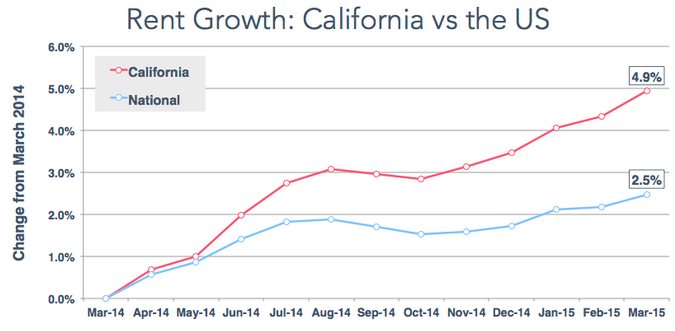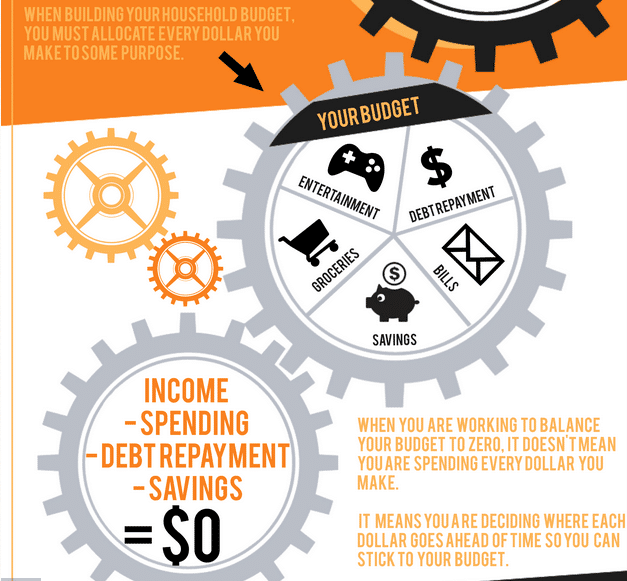If you’re like most people, you probably think that it’s impossible to live in California on a modest budget. To most people, it’s a place where only movie stars and athletes can live comfortably.
Well, it’s time to ditch those preconceived notions. As of 2009, the median household income in California is actually $44,456. In fact, if you understand the power of budgeting, you can live in the Golden State for less than $40,000 every year.
Why Budgeting Matters
Let’s get one thing out of the way: is it possible to live on a budget in California? Definitely. Is it easy? Not particularly, especially if you don’t understand the importance of budgeting your money.
Before we dive into potential budgeting strategies, we need to address a few issues first. First off, this is NOT a budget for families. When designing this budget, we had a single person in mind. The principles still hold up, but there just won’t be enough money flowing to keep a family of four well-fed and taken care of.
Also, don’t expect any expensive vacations in your immediate future. This is a budget, after all. It’s going to require a certain amount of self-control, foresight, and commitment on your part. The best budgeting strategy in the world won’t work if you don’t stick to it.
To get some perspective, let’s compare how much the essentials will cost you in the Bay Area when compared to the rest of the country. Let’s address the elephant in the room: renting an apartment is bound to be one of your first (and biggest) expenses.
Assuming that you don’t have your heart set on buying a house on this budget, the nationwide median rental price for a one bedroom apartment is $940. On the other hand, the median rental price of the same apartment in California is $1,350 and rising (according to a report released by Apartment List).

Image via apartmentlist.com
That’s about 40% higher than the national average price. Remember: that’s just the average price in California. San Francisco and Laguna Beach boast the highest prices for one-bedroom apartments in California ($3,400 and $1,860 respectively).
Those aren’t the only places where prices are on the rise. According to a report by the Bureau of Labor Statistics, residents of Los Angeles actually spend an extra $1,000 per year on food than the average American ($6,529 compared to $7,504).

Image via bls.gov
Obviously, there are a few other essentials that you’ll need to account for, but one thing is clear: budgeting is more than just a clever way to save some money. Properly budgeting your money is the key to successfully living in California.
Money Management 101
So, if you’re looking at our budgeting strategy, it’s safe to assume that you’ve looked at other budgeting strategies. You’re probably hoping to find the best guide you possibly can. In reality, the particulars of any budget aren’t too important. What really matters is the value placed on the fundamentals of money management.
Essentially, money management comes down to a few core ideas. If you’re not capable of internalizing these budgeting processes, you’re going to have a tough time sticking to your strategy.
One of the first principles that you’ll need to embrace is the idea that being conservative is always better than being optimistic. You can’t budget with the expectation that everything is going to go perfectly. Accepting that rainy days are inevitable is the key to being prepared for when they come.
Why does this principle matter so much? Well, this particular mindset can motivate you to incorporate a certain level of safety into your budget. Plan for a lower income than what you’ll get and be prepared for more expenses than you anticipated. That’s why, although the median household income is $44,456, we’ve created a budget plan that allows you to live in California for under $40,000.
The second (and arguably, most important) principle that you’ll need to internalize is that budgeting is more than a minor change in your lifestyle. If you’re serious about saving money, you’re going to need to work on that budget day after day, month after month.
Budgeting can be a lengthy process, requiring plenty of discipline and long-term vision. If you’re like most people, you might stumble a few times and make some mistakes. Still, being able to recover and move forward in spite of them is the difference between a successful budget and a failed one.
Picking what budgeting strategy to follow can be a bit of a messy affair. There are plenty of options, and there’s no clearly superior plan. At the end of the day, the personal finance plan you choose to follow is, well, personal. Even the best templates are going to need a bit of adjusting on your end if you consider your own priorities (which you should).
That being said, there are a few standard budgeting templates that you should feel free to consider. They’re not particularly fancy, but that’s the beauty of budgeting. It’s not something that demands a certain level of skill or luck. With enough discipline and the proper education, anyone can create a successful budgeting plan.
To start things off simply, we’re going to look at the classic budgeting strategy. Again, nothing fancy or particularly mind-blowing. The classic budgeting style is all about simplicity and efficiency. Essentially, you’re going to take the time to figure out your income (which we’ll assume is $40,000) and then assign spending limits to your most common expenses.
What you’re trying to do here is keep your spending in each particular category limited. Let’s say that you plan on only spending $100 per month on entertainment (movies, a night out, etc.). Once you’ve hit your monthly limit, that’s the end of your spending for the month.
Next, we’ll take a look at the second level of the classic budgeting style: the priority-based budget. Here, you’re using a system that puts more emphasis on the essentials (certain bills and expenses you have throughout the month). One of the easiest ways to do this is to automate everything you deem important. In other words, set-up auto bill pay.
Student loans, rent, electricity…these are just a few of the bills you could (and should) make a priority. The key to this strategy is to keep track of your spending beyond these essentials so you don’t end up overdrawing your account. Once you know how much you have to save for the essentials, any extra money is yours to spend.
There are a few other variations of these styles that people tend to incorporate into their lives. The zero-based budgeting style is one that definitely deserves consideration. Here’s what you’re looking at: with this strategy, the key is to give every dollar a role. Make no mistake, this particular strategy is noticeably more regimented than the other styles. Honestly, it’s more effective for people who don’t have particularly volatile incomes (read: they always get a specific amount for the work they put in).

Image via moneyproblems.ca
It’s called zero-based because your goal is to end up with zero dollars left at the end of the month. That doesn’t mean, however, that you’ve spent all your money. Every dollar is accounted for in a specific category. $2000 on rent, $400 on food, $300 on student loans…this strategy is all about allocating money efficiently. It demands quite a bit of planning beforehand, but the perks are undeniable.
While each of these budgeting types have their strengths and weaknesses, we’re not here to pick which is better than the other. In reality, our goal is to create a budgeting plan that fits your lifestyle and needs. To do this, we need to take the best aspects of each plan and combine them to create something that can support your goals.
Personal Finance Tools: A Budgeting Coach in your Pocket
As informative as this article is, there will be times where you’ll need a more personalized touch. Having a plan of attack is important, but having someone (or something) to help you stay on track every step of the way is critical to your success when it comes to budgeting. So, we went ahead and found some of the best personal finance tools that you can use today.
If you’re looking for a personal finance tool, there’s one particular tool that will handle all your needs: Mint. Not only is it one of the most popular options on the market today, it’s also a free one.
The elegance of Mint is that it brings together every aspect of your finances. All your banks, credits cards, savings and other financial accounts are connected, in the effort to give a clearer picture of your situation. Of course, Mint does more than just let you see your money and where it is. Mint lets you create a household budget and (more importantly) warns you if you’re not sticking to it.
Mint is a great tool, but it’s still just a tool. While it can’t manage your money for you, it will suggest financial products that could save you money (low-interest credit cards and higher interest savings accounts). Considering what you’re getting for free (a mobile app and a web-based personal finance tool), Mint is definitely a great place to start if you know you’ll need a personal finance coach in your pocket.
If you’re looking for a more mobile-minded solution, Level is designed as a ‘financial GPS’, letting you know what’s safe to spend on any given day. Plus, Level can give you vital financial insights. From how much money you spend on coffee and drinks to tracking your cash flow so it can reinforce your positive spending habits.
The Case Study
For the sake of making things easier for you, we decided to consult a study by the California Budget Project. This particular study was based off a variety of scenarios, but for our purposes, we’re going to focus on the ‘single adult’ category.

Image via calbudgetcenter.org
First off, it’s important to note that this budget plan is for Los Angeles County. While $911 might seem shockingly low (especially considering what we found to be the average price of a one-bedroom in Los Angeles), this is assuming that you have the foresight to anticipate your budget’s needs. Remember: the average doesn’t automatically dictate what you can get your hands on. Finding housing for that price might be difficult, but it’s far from impossible.
Since this is a budget designed for a single adult, there’s no need (or room in the budget) for child care. When it comes to transportation, the CBP report found that $303 per month was enough. This is assuming that the adult uses their car for work and running errands. These numbers are based on the IRS mileage allowance, as well as an analysis of the US Census Bureau data.
After accounting for each essential expense, the CBP came up with this number:

Image via calbudgetcenter.org
That’s right. According to this report, a single adult can live in Los Angeles for significantly less than $40,000 per year.
Start Budgeting Today
Clearly, with enough discipline, you can survive in California on a modest budget. The key to having a solid budgeting strategy is to take steps toward sticking to that budget every day. First, you have to make yourself accountable. Even the most frugal among us are going to struggle with temptation from time to time. Tell someone close to you that you’re planning on living on a budget. Having someone who you check-in with constantly can be that push you need to stay on track.
Once that’s taken care of, take the time to create a strategy that you’ll stick to. No matter what plan you choose, the key is to be consistent and honest with yourself. As long as your essentials are taken care of, you’ll have the freedom to manage the rest of your income and minimize your stress.
Finally, one of the most important steps you can take today is to start accounting for things beyond your day-to-day expenses. Ask yourself the important questions: how much do you think you’ll need for a rainy day? How much money do you want to save for your retirement?
According to the budget posted above, you’ve still got $13,000 beyond your essential expenses (if you’re making the median income in California).
You could put money into your savings account, pay off your debt or invest for your retirement. Remember: living on a budget today doesn’t mean that you can’t have a healthy bank account tomorrow.




